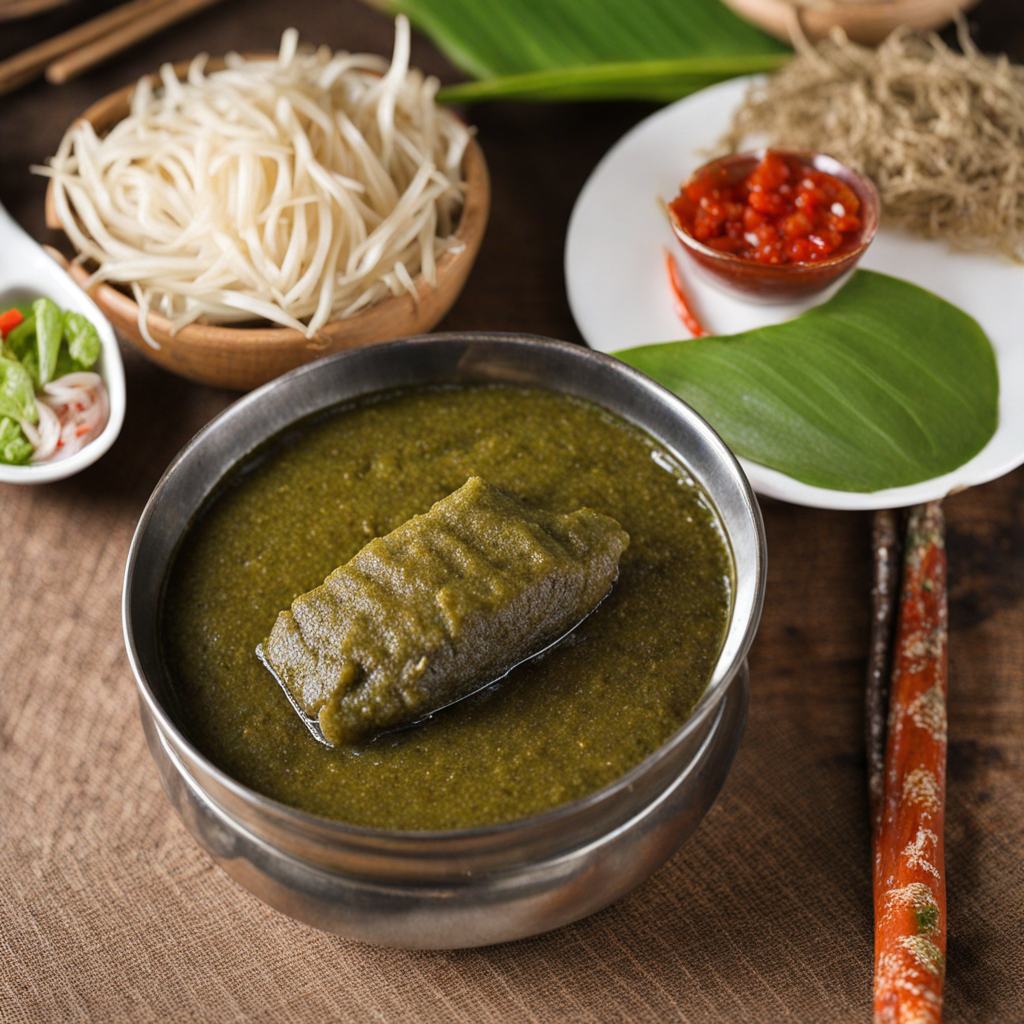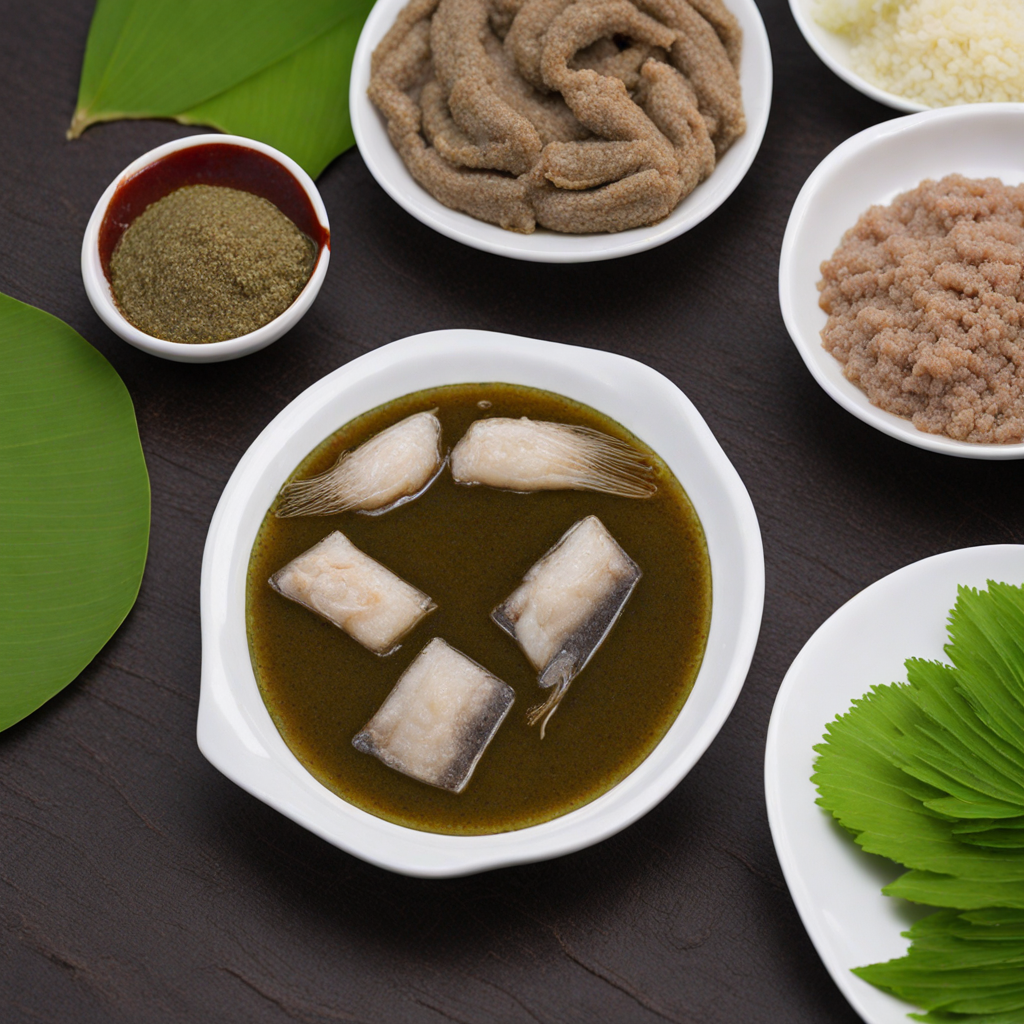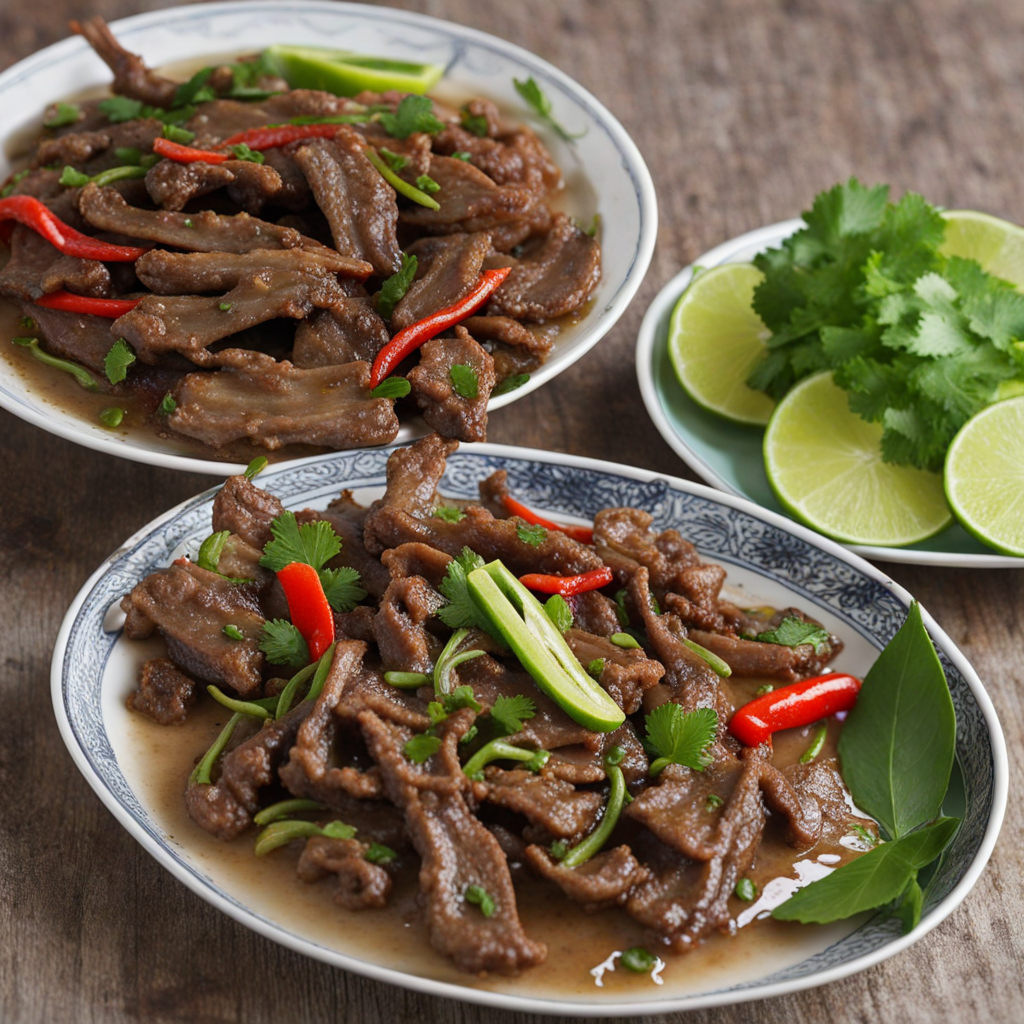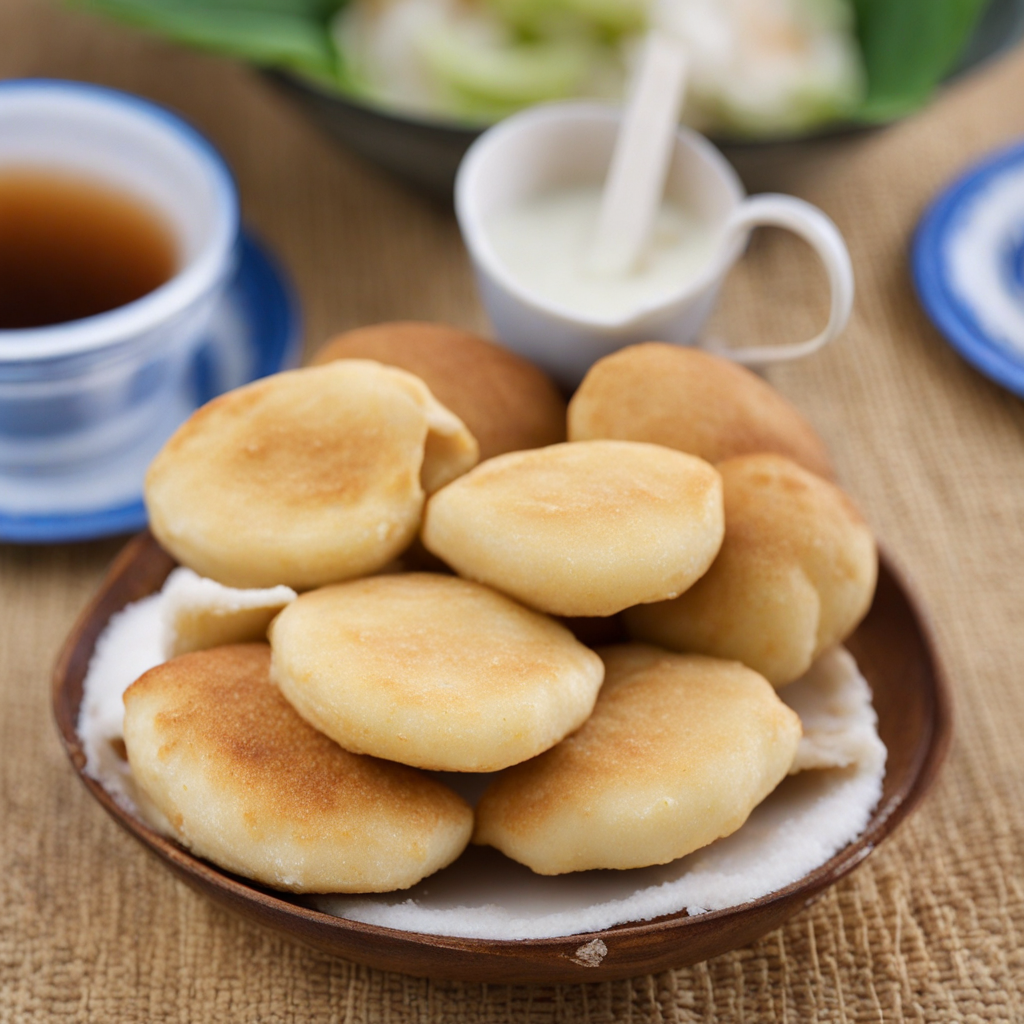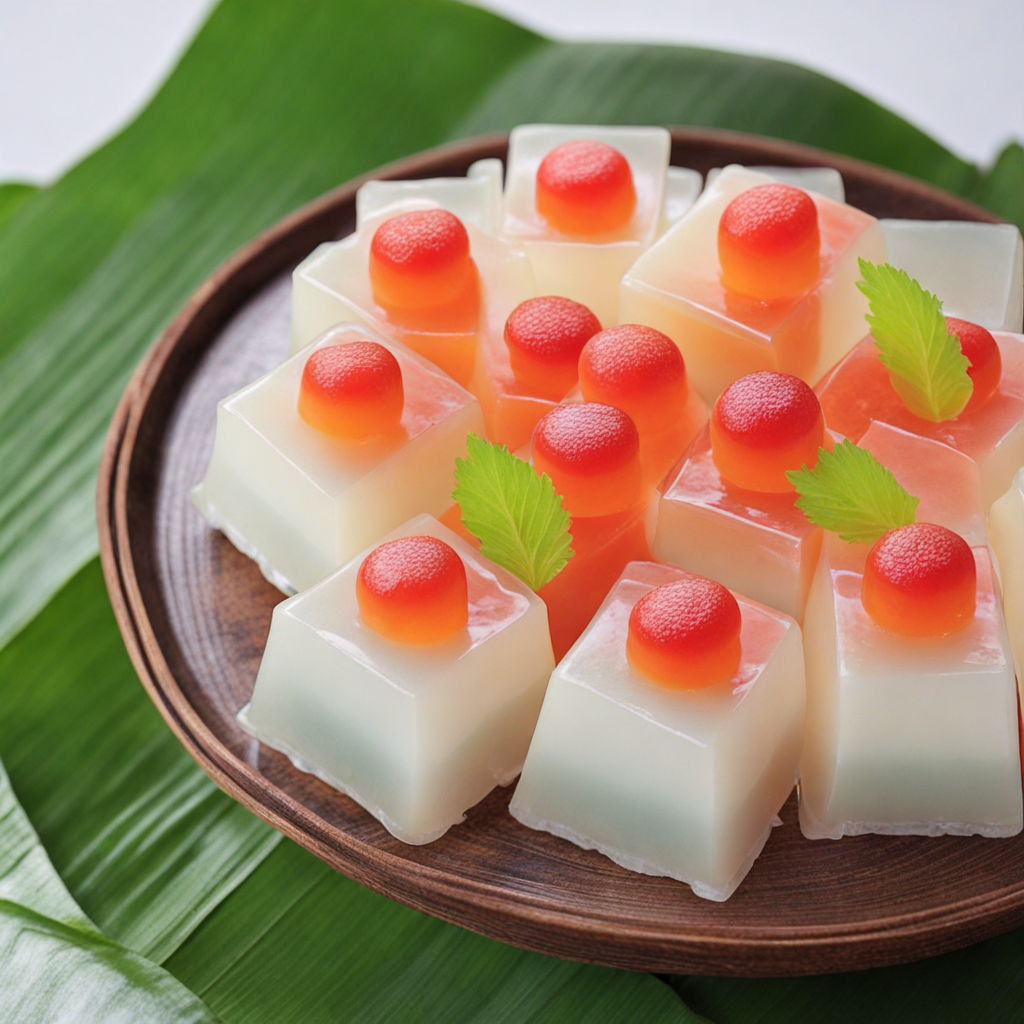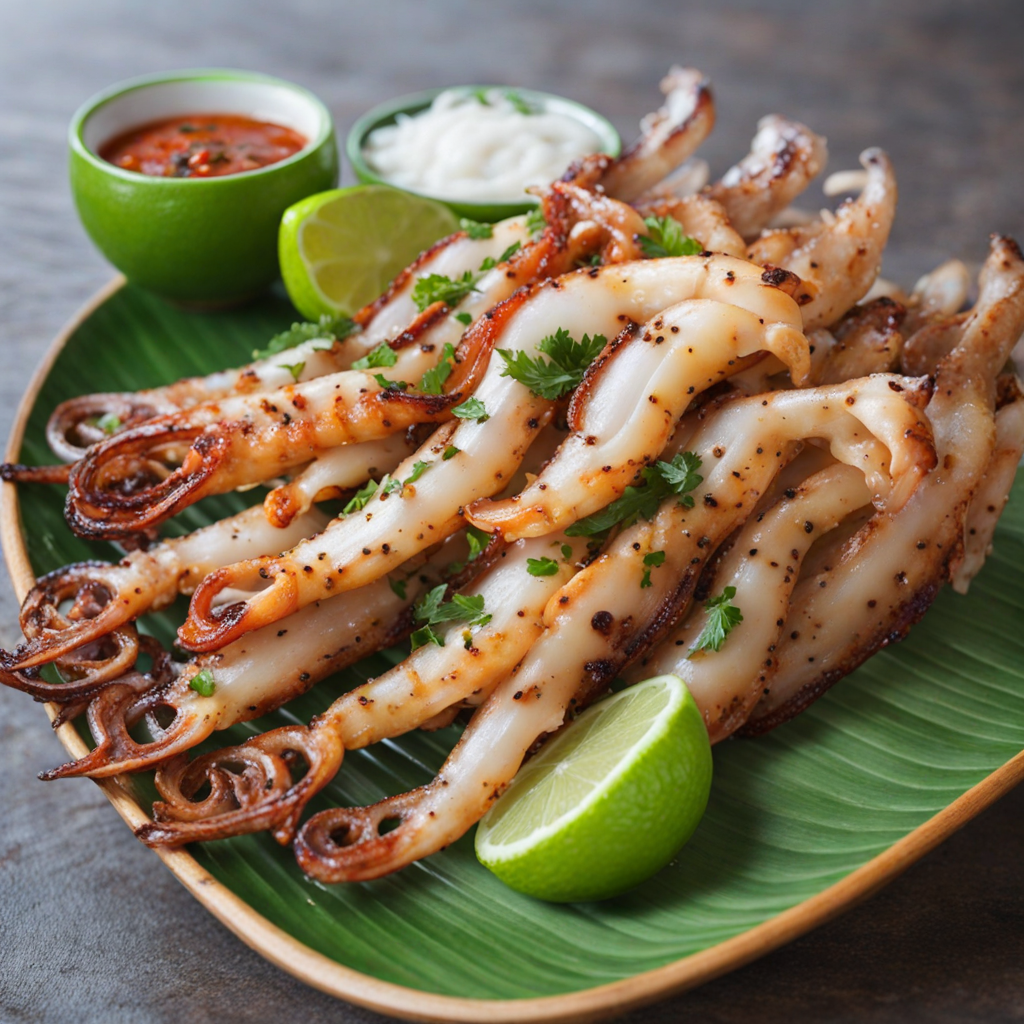Prahok
Prahok is a traditional Cambodian fermented fish paste that embodies the rich culinary heritage of the country. Made primarily from freshwater fish, often mudfish, Prahok undergoes a meticulous fermentation process that can last anywhere from several weeks to several months. The fish is ground into a paste, mixed with salt, and then placed in jars to ferment. This process not only preserves the fish but also intensifies its flavor, resulting in a pungent and savory condiment that is an integral part of Cambodian cuisine. With its robust umami profile, Prahok is often described as having a strong, salty flavor with earthy undertones, making it a unique addition to a variety of dishes. It is commonly used in soups, sauces, and marinades, where it enhances the overall depth of flavor. For those open to exploring new tastes, Prahok can be a revelation, as it provides a taste of the ocean while remaining rooted in the local ingredients of Cambodia. The aroma of Prahok can be an acquired taste, but once embraced, it offers an authentic experience of Cambodian cooking. Prahok is not only a flavor enhancer but also a symbol of Cambodian culture, often enjoyed with rice or fresh vegetables. It can be used as a dipping sauce accompanied by a blend of herbs and spices, showcasing the balance of flavors typical in Khmer cuisine. Whether served in a traditional dish like "Prahok Ktis" (a paste mixed with pork and coconut milk) or enjoyed simply with rice and fresh greens, Prahok invites food lovers to savor its distinctive taste and appreciate the culinary traditions of Cambodia.
How It Became This Dish
The History of ‘ប្រហុក’ (Prahok) in Cambodia #### Origins and Definition Prahok, a fermented fish paste, is a quintessential ingredient in Cambodian cuisine, revered for its distinctive flavor and aromatic profile. Its origins can be traced back over a thousand years, deeply intertwined with the history and culture of the Khmer people. The word "prahok" comes from the Khmer language, where "pra" signifies something that is salted, and "hok" refers to fish. Traditionally, Prahok is made from freshwater fish—most notably snakehead fish (known as "trey riel")—which are salted and then fermented in jars, a process that allows for preservation and enhances the umami flavor. The technique of fermenting fish has been practiced in various cultures around the world, but in Cambodia, it reflects the local climate and the need for food preservation before modern refrigeration methods were available. The Mekong River, which runs through the heart of Cambodia, has historically been a crucial source of fish, making it a natural choice for fermentation as a means of extending the shelf life of this vital protein source. #### Cultural Significance Prahok is more than just a condiment; it is a cultural emblem of Cambodia, interwoven with the country’s identity and culinary heritage. For many Cambodians, Prahok is akin to what fish sauce is to Thai cuisine or miso is to Japanese cuisine; it is an essential ingredient that enhances flavor in various dishes. Its use is prevalent in everyday cooking, and its preparation can be a communal activity that brings families together. In traditional Cambodian households, Prahok is often served with steamed rice and fresh vegetables, and it plays a pivotal role in many traditional dishes. One of the most famous is "amok," a coconut milk curry where Prahok adds depth and complexity to the flavor profile. Prahok is also used in "prahok ktis," a spicy dip made with minced pork, coconut milk, and herbs, showcasing how this ingredient can be adapted to suit different culinary styles. The culinary significance of Prahok extends beyond the kitchen; it is embedded in the rituals and social fabric of Cambodian life. During festivals and family gatherings, dishes made with Prahok are often central to feasting, symbolizing hospitality and togetherness. Its production and consumption reflect a connection to the land and the river, highlighting the importance of local resources and sustainable practices in Cambodian culture. #### Development Over Time The preservation of fish through fermentation is a practice that predates recorded history, but it is believed that Cambodian methods were influenced by various regional interactions throughout Southeast Asia. The Khmer Empire (802-1431 AD), which was a dominant force in the region, played a crucial role in shaping culinary practices. Interaction with neighboring cultures and trade with distant lands introduced new ingredients and techniques, helping to refine the process of making Prahok. During the colonial period, particularly under French rule in the late 19th to mid-20th centuries, Cambodian cuisine underwent shifts, as Western influences began to permeate local food culture. While many traditional practices persisted, the introduction of new cooking methods and ingredients led to a diversification of the Cambodian culinary landscape. Yet, the importance of Prahok remained steadfast, regarded as a staple that could not be overshadowed by foreign influences. The Khmer Rouge regime (1975-1979) marked a dark chapter in Cambodia's history, leading to the near destruction of the country's cultural heritage, including its culinary traditions. During this period, many Cambodians faced starvation, and traditional foods were abandoned in favor of survival. However, following the fall of the Khmer Rouge, there was a resurgence of interest in traditional foods, including Prahok. Efforts to revive and preserve Cambodian cuisine took root, with chefs and home cooks alike rediscovering the rich tapestry of flavors that define their heritage. In contemporary Cambodia, Prahok is experiencing a renaissance. While it remains a staple in rural areas, urban centers have seen a rise in interest among younger generations and food enthusiasts. Modern chefs are experimenting with Prahok in innovative ways, incorporating it into fusion dishes and upscale dining experiences. Food festivals and culinary events often highlight Prahok, showcasing its versatility and encouraging a new appreciation for this traditional ingredient. Moreover, the global interest in fermented foods has further spotlighted Prahok on the international stage. With the rise of the farm-to-table movement and a growing awareness of sustainable food practices, many are looking to traditional fermentation methods as a means of preserving flavors and promoting health benefits. This has allowed Prahok to transcend its regional roots, finding its place in the global culinary dialogue. #### Conclusion Prahok is not merely a fermented fish paste; it is a symbol of Cambodian resilience, culture, and culinary tradition. Its rich history reflects the interconnectedness of the land, the river, and the people who have relied on these resources for centuries. As Cambodia continues to navigate modernity while cherishing its past, Prahok serves as a delicious reminder of the country’s heritage, embodying the spirit of community, sustainability, and innovation. In the ever-evolving landscape of global gastronomy, Prahok stands as a testament to the power of food to connect us to our history and to each other. Whether enjoyed in a humble home or a fine dining restaurant, this beloved ingredient will forever hold a cherished place in the hearts and palates of the Cambodian people.
You may like
Discover local flavors from Cambodia


